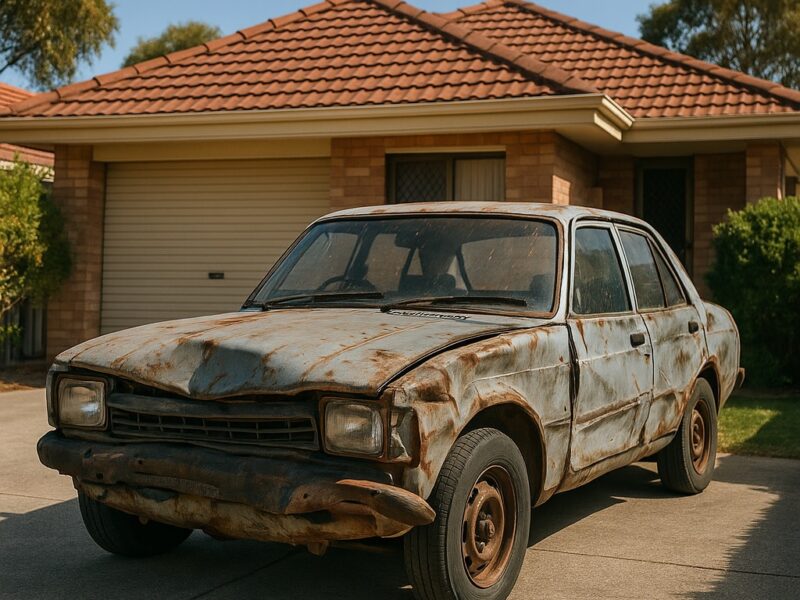One of the most common questions in car maintenance is, “How often should I change my brake pads?” The typical answer you’ll find is a frustratingly vague range, somewhere between 25,000 and 70,000 miles. This is about as helpful as being told a loaf of bread will last “between three and ten days.”
Key Takeaways
- Driving style is everything — Your brake pad lifespan depends on how and where you drive, not just mileage.
- Urban drivers wear pads fastest — Expect replacements around 25,000–40,000 miles due to frequent braking.
- Highway drivers get the most life — Pads can last 60,000–80,000+ miles thanks to minimal brake use.
- Aggressive and towing drivers need special care — Pads can wear out in under 25,000 miles, requiring frequent inspections.
- Annual brake inspections are essential — No matter your driving style, check brakes at least once a year to stay safe and avoid costly repairs.
The reality is, a one-size-fits-all mileage number is meaningless. The true lifespan of your brake pads depends almost entirely on how and where you drive. A set of pads that lasts a highway commuter five years might be completely worn out in one year on a city driver’s car.
Instead of relying on a generic number, this definitive guide provides a replacement schedule based on the person behind the wheel. Find the profile that best matches you to get a far more accurate estimate of when you should be planning for your next brake service.
(Note: The following estimates assume an average passenger vehicle like a sedan or crossover using quality, OEM-equivalent ceramic brake pads.)
Profile 1: The Urban Commuter
- Who You Are: Your daily drive is a battle through dense, stop-and-go city traffic. Your trips are often short, your average speed is low, and your foot is constantly moving between the accelerator and the brake pedal.
- Why It Matters: This is the most demanding environment for brakes. The sheer frequency of braking, even at low speeds, generates constant heat and leads to the highest rate of wear.
- Expected Lifespan: 25,000 to 40,000 miles (approx. 40,000 to 65,000 kilometers).
- Your Schedule: You are on the most accelerated replacement schedule. Your brakes should be inspected thoroughly at least every six months, or with every oil change, to monitor their rapid wear.
Profile 2: The Suburban Do-It-All
- Who You Are: You are the “average” driver. Your routine is a mix of everything: some stop-and-go traffic on city streets, cruising on suburban roads, and the occasional trip on the highway. You might be commuting to an office park or running family errands.
- Why It Matters: This balanced mix of driving provides periods of both wear and rest for your brakes. This profile’s wear rate is what most manufacturer estimates are based on.
- Expected Lifespan: 40,000 to 60,000 miles (approx. 65,000 to 95,000 kilometers).
- Your Schedule: A comprehensive professional brake inspection once a year is a solid, reliable rule of thumb to stay ahead of maintenance needs.
Profile 3: The Highway Road-Warrior
- Who You Are: Your vehicle spends the vast majority of its life cruising at a steady speed on the highway. You have a long-distance commute or you frequently take road trips.
- Why It Matters: This is the ideal, least stressful environment for brakes. They are used very infrequently—mostly for entering or exiting the highway or in the rare traffic jam.
- Expected Lifespan: 60,000 to 80,000+ miles (approx. 95,000 to 130,000+ kilometers).
- Your Schedule: Your pads will last a very long time, but don’t neglect them. Infrequent use can sometimes lead to its own problems, like seized caliper pins from lack of movement. An annual check-up is still critical to ensure all components are moving freely, even if the pads themselves have plenty of life left.
Profile 4: The Aggressive Driver or Towing Hauler
- Who You Are: You either have a heavy foot (you accelerate and brake hard) or you use your truck or SUV for demanding tasks like towing a boat, trailer, or carrying heavy cargo.
- Why It Matters: Both of these scenarios generate extreme amounts of heat—the number one enemy of brakes. Hard braking creates intense friction, while towing dramatically increases the vehicle’s mass, requiring much more force to stop.
- Expected Lifespan: Highly variable, but typically the shortest. Can be less than 25,000 miles (40,000 kilometers).
- Your Schedule: You are a special case. Your schedule is “as needed,” and requires frequent, diligent inspections. You should also invest in high-quality performance or severe-duty brake pads specifically designed to handle the extra stress and heat you generate.
The Golden Rule: Inspections Over Mileage
While these profiles provide a powerful guideline for planning, they are still just estimates. The only way to know for sure how much life your brake pads have left is through a physical inspection. Regardless of your driving style, make it a habit to have your brakes professionally inspected at least once a year. A mechanic will not only measure your pad thickness but also check your brake fluid, rotor condition, and caliper function—all vital to your safety.
For more information on the factors at play, you can read this guide on how often you should change your brake pads. By identifying your driver profile and committing to regular inspections, you can replace guesswork with a predictable, safe, and effective maintenance schedule.
How do I know when my brake pads need replacing?
Common signs include squeaking or grinding noises, reduced braking performance, or a brake warning light. A mechanic can measure pad thickness to confirm.
Can I visually inspect my brake pads myself?
Yes, if you can see through your wheels or remove them, look for pad thickness. Less than 3mm (⅛ inch) means it’s time to replace them.
Do front and rear brake pads wear out at the same rate?
No. Front pads usually wear faster since they handle more braking force. Always have both checked during inspections.



